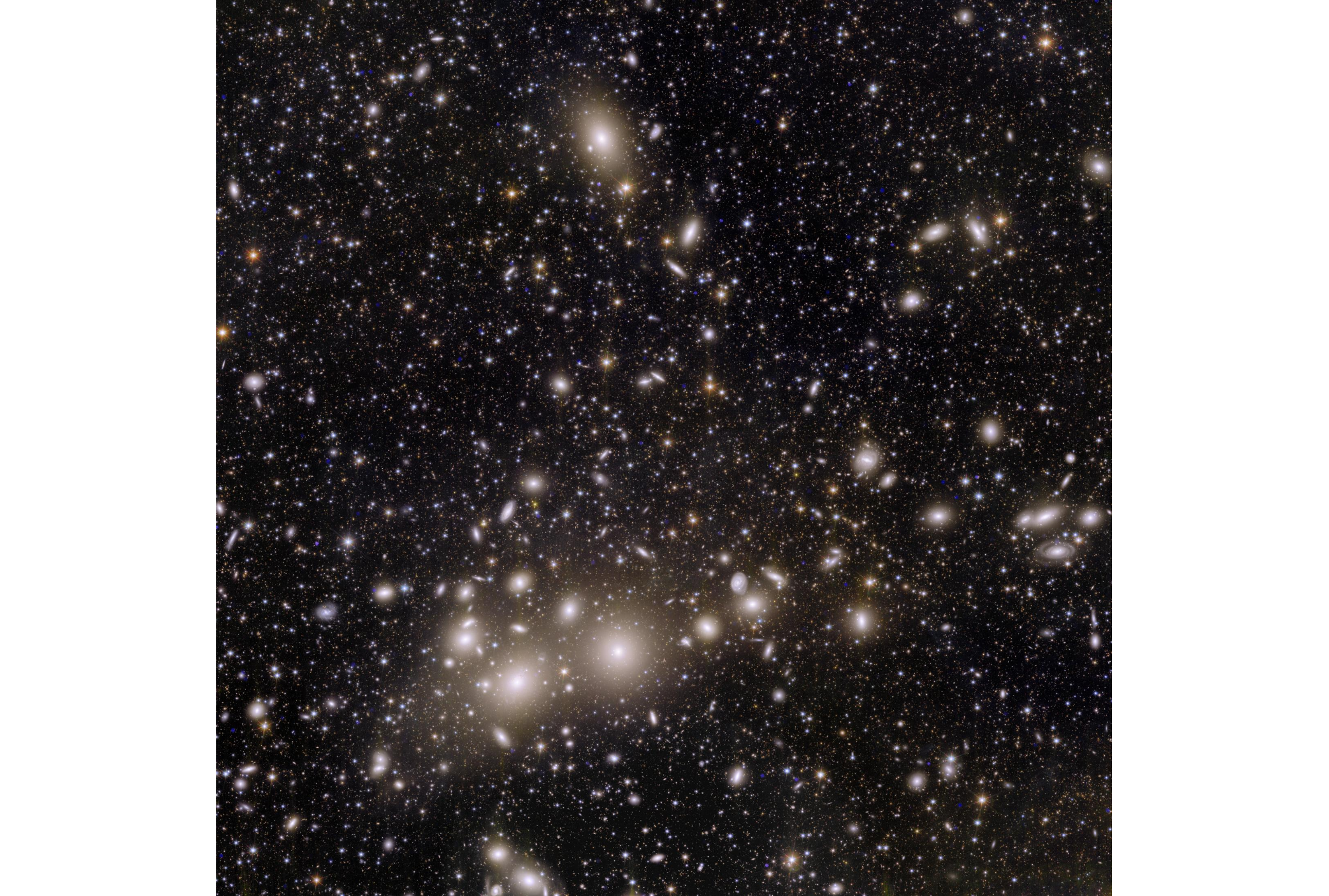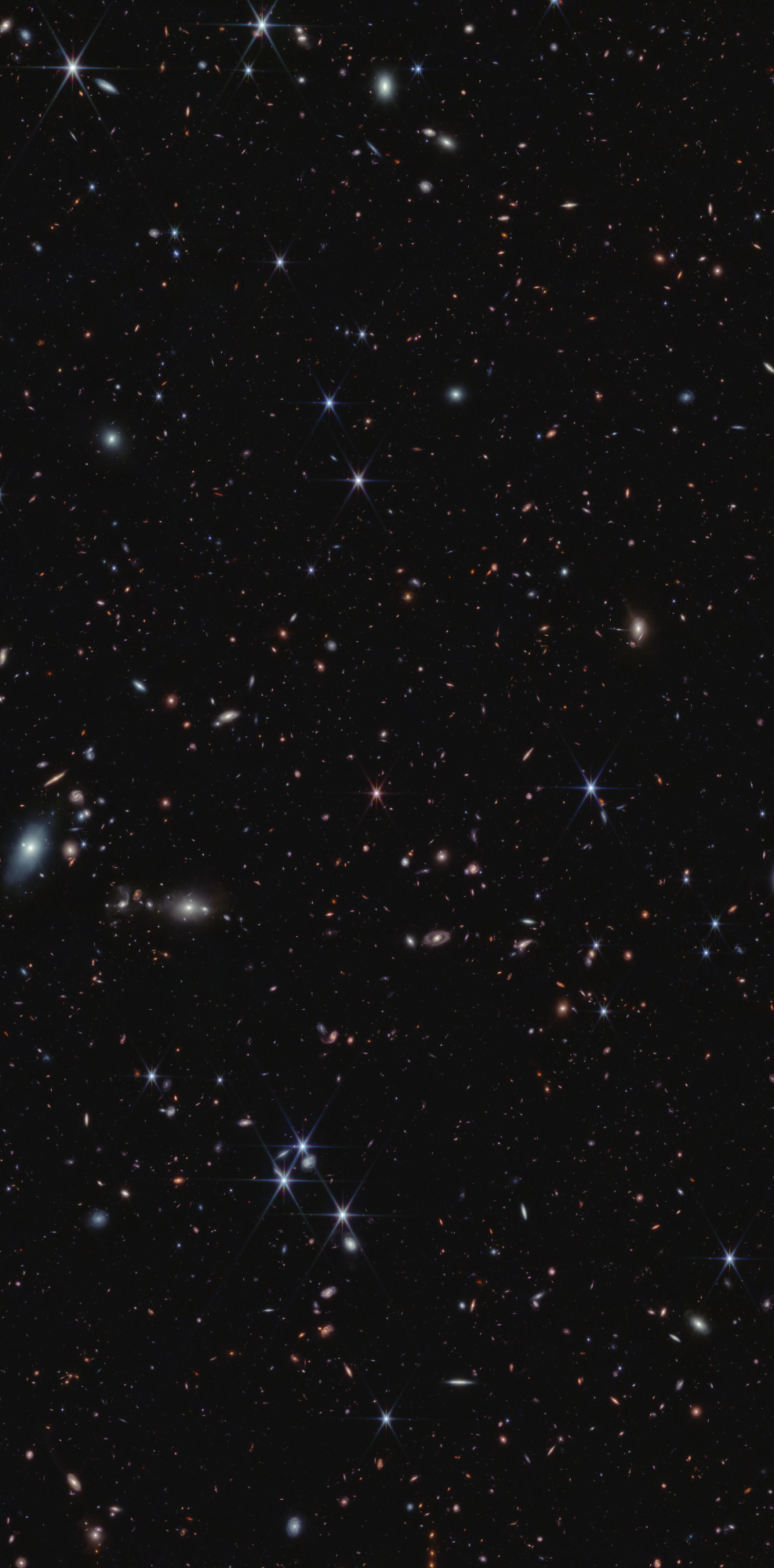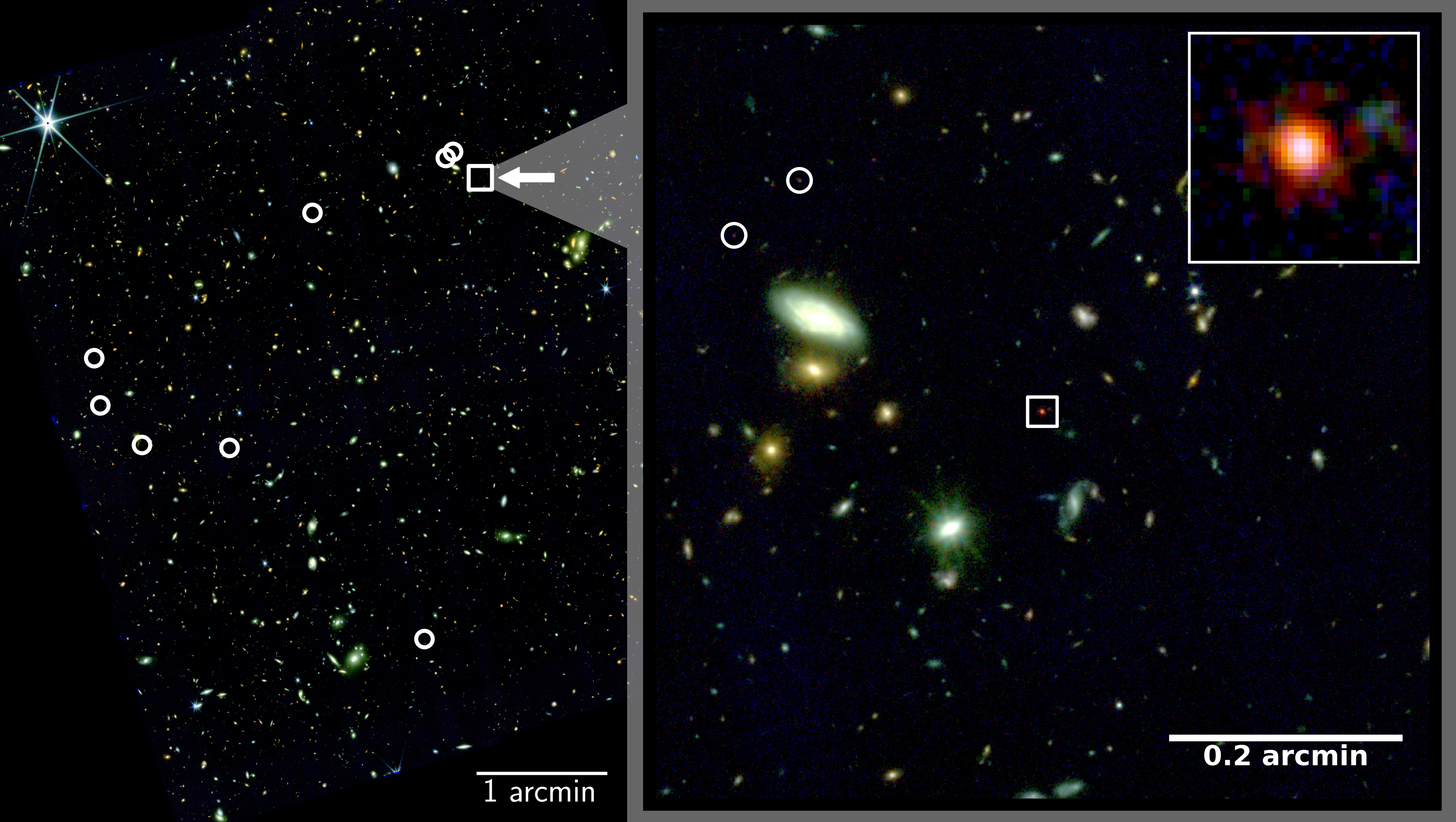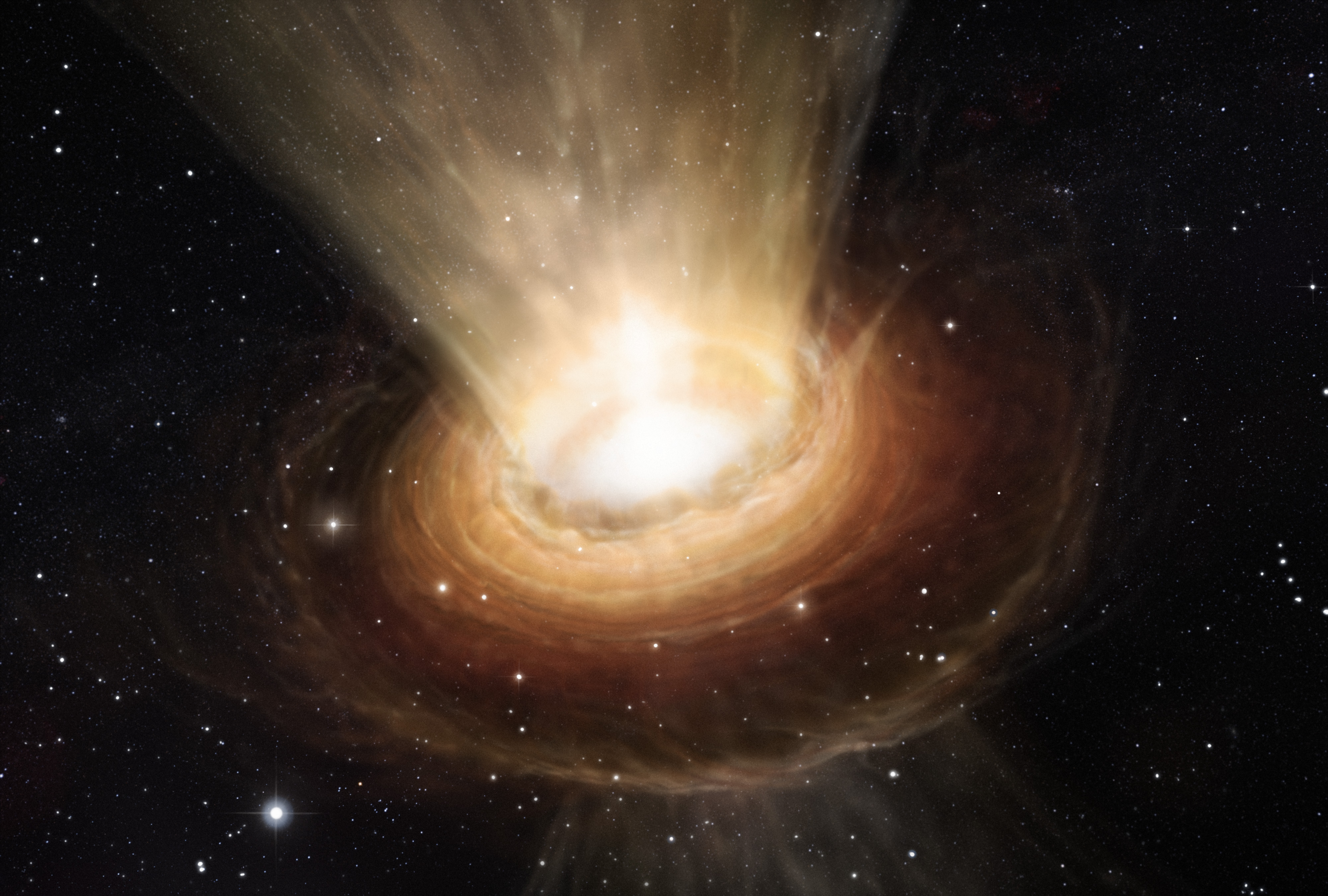The formation and evolution of
Supermassive black holes in the early Universe
Galaxies and their Supermassive Black Holes in the early Universe
My main scientific interest lies in the emergence of galaxies in the early Universe. I am particularly interested in the formation and evolution of supermassive black holes (SMBHs), which we can observe during phases of active growth (mass accretion), when they shine as active galactic nuclei. The most luminous AGN, which also host the most massive SMBHs are historically called quasars. My group studies AGN and quasars in the first two billion years of the Universe to understand the processes by which SMBHs form, how they grow to their observed masses and how they influence the evolution of their host galaxies. The first massive SMBHs are believed to reside in the most overdense regions of the Cosmic Web and observations of these environments allow us to test large-scale structure formation models. Furthermore, quasars serve as bright beacons to study hydrogen reionization, the last major phase transition of the Universe, in absorption.

The search for the most distant quasars
To understand the formation of supermassive black holes my group expands the quasar redshift
frontier using near-infrared, wide-area photometric surveys. Applying careful
completeness analyses we can statistically constrain the quasar number densities to
understand the emergence of the first SMBHs.
The Euclid space mission, launched in 2023, and the Vera Rubin Observatory with its Legacy
Survey of Space and Time, will provide the deepest optical and near-infrared surveys
of the extragalactic sky. These surveys will allow us to discover quasars up to redshifts of
~10 to truly understand their formation processes and early growth. My group works on
developing new quasar selection strategies tailored to these surveys to build the first
census of the most distant quasars.
The image to the left shows Euclid's view of the Perseus cluster.
Many of the faint background galaxies were first unveiled by Euclid's novel observations.
In past work I have designed and executed the Extremely Luminous Quasar Survey (ELQS) to discover the most luminous quasars at z=3-5 for a more accurate measurement of the z=3-5 bright-end quasar luminosity function. This selection strategy applied random forest classification on panchromatic photometric data.
I have also been an integral part of the Pan-STARRS1 distant quasar survey targeting quasars at z>6. Following many observational campaigns in the last few years, we recently increased the discovery sample by a 55 quasars. Based on these number counts, I determined the most precise estimate of the z~6 quasar luminosity function to date.

Probing the early Universe with the James Webb Space Telescope
The James Webb Space Telescope (JWST) opens up the near- and mid-infrared sky unhindered by the Earth's atmosphere. It's unprecendent capabilities are revolutionizing our understanding of distant galaxies and lower mass supermassive black holes, which appearing as AGN.
I have led the data reduction and analysis of the JWST program "Towards Tomographic Mapping of Reionization Epoch Quasar Light-Echoes with JWST" (PI: J. Hennawi) to characterize the environments of two of the most distant quasars. Within the two quasar fields we discovered 51 z>5 galaxies, of which eight are found in the immediate environments of the two quasars. Based on these galaxies we calculate the first constraints of the quasar-galaxy auto-correlation function at z~7.3 and infer minimum dark matter halo masses smaller than found for z~6 quasars. Our clustering results provide tentative evidence for a non-monotonic redshift evolution of quasar clustering properties.

We furthermore discovered a "Little Red Dot" (LRD) at z~7.3 in the J1007+2115 quasar field. LRDs are a puzzling population of sources with broad emission lines, similar to an AGN. While their true nature is not fully understood, it is believed they host accreting SMBHs. Most notably, our discovered LRD is embedded in an overdensity of 8 galaxies, allowing us to calculate a first estimate of LRD-galaxy clustering. The image above highlights the field around the LRD (square) with the galaxies in its vicinity (circles). In our study, A little red dot at z = 7.3 within a large galaxy overdensity published in Nature Astronomy, we find the LRD to best hosted in a similar rare and massive dark matter environment as luminous quasars, suggesting the possibility that LRDs could serve as "obscured" precursors to the quasar population.
With my JWST follow-up program "GO 5734" (PI: J. Schindler), we aim to provide a more in-depth study of the spectral properties of this LRD.
My group is also heavily involved in the JWST program "GO 5734 COSMOS-3D" (PI: K. Kakiichi) , the largest approved JWST program to date. Over an area of 0.33 deg2, this program will provide the most comprehensive census of galaxies and active galactic nuclei at z=7-9. The expected number densities will further allow us to place constraints on the dark matter halo masses of these sources via clustering measurements.
In the press:
- Mysterious cosmic ‘dots’ are baffling astronomers. What are they?" (Nature News)
- Entdeckung eines neuen „Little Red Dots“ in einer sehr massereichen Umgebung (UHH/MIN)

Characterization of supermassive black holes
Spectroscopic follow-up observations of quasars are not only essential to measure the mass of the SMBH and to understand the physics of the accretion process.
The spectra also allow us to investigate the chemical make-up of the accreted gas and provide insight into foreground galaxies as well as the state of the
intergalactic medium.
I have been leading one of the largest spectroscopic studies of high-redshift quasars, the
X-SHOOTER/ALMA Survey of Quasars in the Epoch of Reionization.
Based on this sample of 38 reionization-era quasars, z>5.7, we concluded that quasars at these times are accreting more rapidly than their lower-redshift
cousins. In addition, the spectra more commonly show large velocity shifts of high-ionization lines, indicative of vigorous (outflowing) gas motion
close to the accretion disk. Even 0.8 Gyr after the Big Bang the accreted gas is already chemically enriched, indicating a fast chemical evolution
at the centers of these early massive galaxies.
I am also a member of the XQR-30 collaboration, which is centered on a large ESO/X-SHOOTER program to provide high signal-to-noise ratio spectra of 30 quasars at z>5.7. This unprecedented data set has already led to some exciting results: in a study published in Nature, lead by Manuela Bischetti, we show that fast outflowing dense gas is observed at a much higher incidence in the first 1 Gyr after Big Bang, possibly indicating more vigorous feedback effects on the surrounding galactic gas. We furthermore use these spectra to understand the evolution and morphology of cosmic hydrogen reionization. By measuring the Lyman-α transmission we were able to conclude that the epoch of reionization extends to z~5.3, later than originally thought.

Machine learning in Astrophysics
My group applies machine learning techniques to search for rare high-redshift quasar candidates in large astronomical datasets. For source classification and photometric redshift estimation (regression problem), we currently employ random forests, eXtreme Gradient Boosting, and Bayesian neural networks.
However, at high redshift, z>6, we run into the problem that there is not sufficient empirical training data available for the rare luminous quasars we are interested in. Therefore, we are currently developing a generative model based on a Variational Autoencoder that can produce synthetic quasar spectra. Trained on a large sample of lower-redshift quasars, this model will allow us to calculate synthetic photometry based on the spectra and reconstruct quasar spectra with missing spectral coverage.
I am further interested to explore the vast data sets of the Euclid mission and the Vera C. Rubin Observatory's Legacy Survey of Space and Time (LSST) to search for rare and exotic objects with unsupervised machine learning methods.